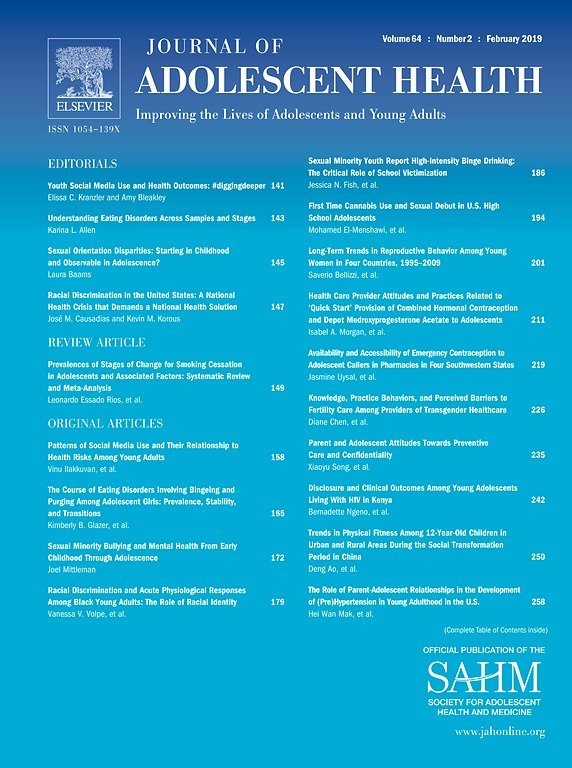YBOP comments: There’s some interesting background related to this paper. (See excerpt from its Conclusion below the Abstract). The Abstract states that only one other meta-analysis on this subject has been published. That other paper found that, “The impact of media on teen sexuality was minimal with effect sizes near to zero.” It was co-authored by Christopher J. Ferguson: Does Sexy Media Promote Teen Sex? A Meta-Analytic and Methodological Review (2017)
For years, Ferguson has been attacking the concept of internet addiction, while intensely campaigning to keep Internet Gaming Disorder out of the ICD-11. (He lost that one in 2018, but his campaign continues on many fronts.) In fact, Ferguson and Nicole Prause were co-authors on major paper attempting to discredit internet addictions. (Their assertions were debunked in a series of papers by experts, in this issue of Journal of Behavioral Addictions.)
Here, the authors of the following meta-analysis describe how Ferguson’s suspect choice of parameters produces his result.
Abstract
Link to abstract – Journal of Adolescent Health (2019)
Coyne, Sarah M., L. Monique Ward, Savannah L. Kroff, Emilie J. Davis, Hailey G. Holmgren, Alexander C. Jensen, Sarah E. Erickson, and Lee W. Essig.
Purpose
Decades of research have examined the impact of exposure to nonexplicit portrayals of sexual content in media. There is only one meta-analysis on this topic, which suggests that exposure to “sexy media” has little to no effect on sexual behavior. There are a number of limitations to the existing meta-analysis, and the purpose of this updated meta-analysis was to examine associations between exposure to sexual media and users’ attitudes and sexual behavior.
Methods
A thorough literature search was conducted to find relevant articles. Each study was coded for associations between exposure to sexual media and one of six outcomes including sexual attitudes (permissive attitudes, peer norms, and rape myths) and sexual behaviors (general sexual behavior, age of sexual initiation, and risky sexual behavior).
Results
Results from 59 studies, involving 394 effect sizes, revealed that exposure to sexual media had a small but significant effect on both sexual attitudes and behaviors; the effect size was comparable to other media effects meta-analyses. Effects were stronger for adolescents than emerging adults. In addition, effects were stronger for boys than girls and for white participants compared with black participants.
Conclusion
This study suggests that exposure to nonexplicit sexual media is associated with both sexual attitudes and behavior, particularly during adolescence. Implications for parents, media producers, and researchers are discussed.
Conclusion Section
Overall, this meta-analysis demonstrates consistent and robust relations between media exposure and sexual attitudes and behavior spanning multiple outcome measures and multiple media. Media portray sexual behavior as highly prevalent, recreational, and relatively risk-free [3], and our analyses suggest that a viewer’s own sexual decision-making may be shaped, in part, by viewing these types of portrayals. Our findings are in direct contrast with the previous meta-analysis, which suggested that media’s impact on sexual behavior was trivial or nonexistent [4]. The previous meta-analysis used 38 effect sizes and found that “sexy” media were weakly and trivially related with sexual behavior (r = .08), whereas the current metaanalysis used more than 10 times the amount of effect sizes (n = 394) and found an effect nearly double the size (r = .14).
First, we found positive associations between exposure to sexual media and teens’ and young adults’ permissive sexual attitudes and perceptions of their peers’ sexual experiences.
Second, exposure to sexual media content was associated with greater acceptance of common rape myths.
Finally, sexual media exposure was found to predict sexual behaviors including age of sexual initiation, overall sexual experience, and risky sexual behavior. These results converged across multiple methodologies and provide support for the assertion that media contribute to the sexual experiences of young viewers.
Although the meta-analysis demonstrated significant effects of sexual media exposure on sexual attitudes and behaviors across all variables of interest, these effects were moderated by a few variables. Most notably, significant effects for all ages were apparent; however, the effect was more than twice as large for adolescents as for emerging adults, perhaps reflecting the fact that older participants likely have more comparative, real-world experience to draw on than younger participants [36, 37]. In addition, the effect was stronger for males compared with females, perhaps because sexual experimentation fits the male sexual script [18] and because male characters are punished less often than female characters for sexual initiation [38]. Finally, the effect was stronger for white participants compared with black participants. This finding aligns with expectations of social cognitive theory [6], which anticipates that black youth may identify less strongly with the predominantly white characters of mainstream media.
Implications
These findings have significant implications for adolescent and emerging adult physical and mental health. Perceiving high levels of peer sexual activity and sexual permissiveness may increase feelings of internal pressure to experiment sexually [39]. In one study, exposure to sexual media content in early adolescence was seen to advance sexual initiation by 9e17 months [40]; in turn, early experimentation may increase mental and physical health risks [37].
The effect sizes found here are similar to those of other studied areas of media psychology such as media’s impact on violence [41], prosocial behavior [42], and body image [43]. In each of these cases, although media use accounts for only a portion of the total variance in the outcomes of interest, media do play an important role. These comparisons suggest that sexual media content is a small, but consequential factor in the development of sexual attitudes and behaviors in adolescents and emerging adults.
